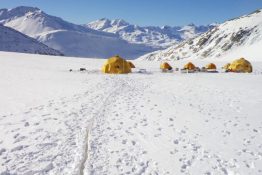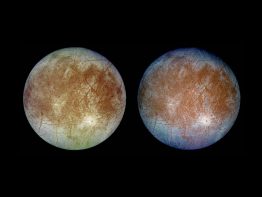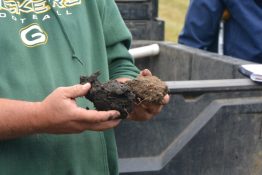The fiber-optic cables that travel underground, along the seafloor and into our homes have potential besides transmitting videos, emails and tweets. These signals can also record ground vibrations as small as a nanometer anywhere the cable touches the ground. This unintended use for fiber-optic cables was discovered decades ago and has had limited use in military and commercial applications. A University of Washington pilot project is exploring the use of fiber-optic sensing for seismology, glaciology, and even urban monitoring.
Read more at UW News »New study calculates retreat of glacier edges in Alaska’s Kenai Fjords National Park
As glaciers worldwide retreat due to climate change, managers of national parks need to know what’s on the horizon to prepare for the future. A new study from the University of Washington and the National Park Service measures 38 years of change for glaciers in Kenai Fjords National Park, a stunning jewel about two hours south of Anchorage. The study, published Aug.
Read more at UW News »Q&A: Healthier soil leads to more-nutritious food, argues new book by UW geomorphologist David Montgomery
During the pandemic lockdown, many people were dabbling in urban farming or growing houseplants. University of Washington geomorphologist David Montgomery was exploring a deeper topic: How do practices that rebuild soil health affect the quality of the food that comes from that soil? His new book, “What Your Food Ate,” released June 21 from W.W. Norton & Company and co-authored by Anne Biklé, explores this question.
Read more at UW News »Experiments measure freezing point of extraterrestrial oceans to aid search for life
Researchers from the University of Washington and the University of California, Berkeley have conducted experiments that measured the physical limits for the existence of liquid water in icy extraterrestrial worlds. This blend of geoscience and engineering was done to aid in the search for extraterrestrial life and the upcoming robotic exploration of oceans on moons of other planets. The results were recently published in Cell Reports Physical Sciences.
Read more at UW News »Farms following soil-friendly practices grow healthier food, study suggests
Everyone knows eating fruits and vegetables is good for your health. But these days, stores offer a dizzying array of options: organic, conventional, CSAs, local agriculture. Which ones are best for your health? A new study, published in January in the journal PeerJ, looks at how regenerative farming practices — soil-building techniques that minimize plowing, use cover crops, and plant diverse crops — affect the nutritional content of the food.
Read more at UW News »





